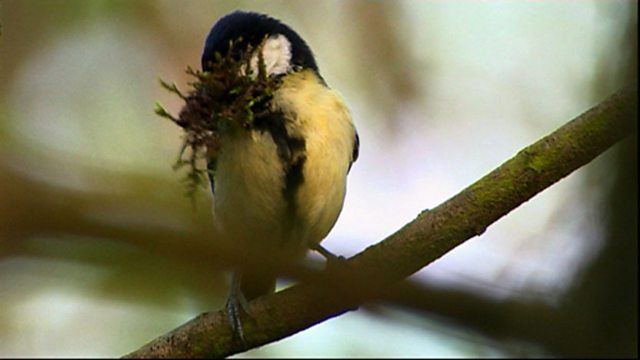
Survival by synchronicity
Birds need to time breeding and migration to an ever changing seasonal schedule.
Andy Gosler from the Edward Grey Institute has been looking at the problems of synchronicity, where all the animals in a particular food chain must synchronise if they are to survive. He is involved with a long term study at Oxford University's Whitham woods. For over 50 years they have been noting the dates of when great tits have been laying their eggs which tells them if the birds can stay synchronised to an earlier spring. In the last 10 years they have had some of the earliest eggs on record, with eggs even at the end of March. This is clearly a measured change over a short period of time but is it attibutable to the great tits trying to adapt to spring conditions? Gosler thinks it is - the caterpillars are coming out earlier because the oak buds are bursting earlier, the caterpillars feed on the oaks and the birds are adapting to have their chicks in the nest at the peak emergence of caterpillars. By happening in such a short amount of time, it has taught scientists alot about the genetics and evolution of breeding. However, migrants, in particular long distance migrants, are having a much more difficult time. They have to make the decision of when to migrate north to breed, long before they know what the conditions are like here in the UK. Some of the swallows, redstarts and warblers are probably declining because they are less able to adapt to conditions. But short distance migrants are better able to adapt.
Duration:
This clip is from
Featured in...
![]()
Garden Birds
Favourite video clips of the UKs best loved garden birds.
![]()
大象传媒 Nature
Be captivated, informed and inspired by the world's wildlife.
More clips from Signs of Change with Chris Packham
-
![]()
Breaking the chain
Duration: 03:16
-
![]()
Future wild
Duration: 04:26
-
![]()
Lifeboat limits
Duration: 01:46
-
![]()
Over exposed
Duration: 03:41
More clips from Springwatch
-
![]()
Hannah Stitfall discovers RSPB Arne's reptiles
Duration: 02:53
-
![]()
Hannah Stitfall goes behind the scenes on Springwatch
Duration: 01:18
-
![]()
Enjoy the calmness of a kelp forest
Duration: 01:11










